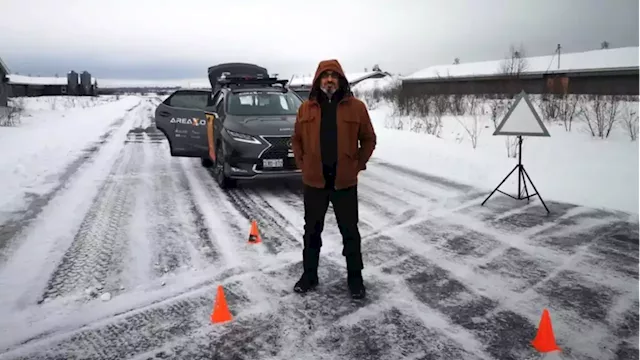Snow can be hard to distinguish for sensors, which are often obscured and confused by bad weather, to detect, making it even more difficult to train self-driving vehicle software and algorithms."You have the snow, you have the rain, you have the fog, you have the dust," said Hassanat.
" is a very complex sensor ... but what's so good about the sensor is that it can be covered in mud," Hassanat said."You can put it any weather condition and they will still operate." The work to get driverless cars ready to handle any weather is crucial because even the simplest car manoeuvers can be complicated by bad driving conditions and make for"terrible, dangerous scenarios," said William Melek, director of the University of Waterloo's RoboHub, a robotics and automation research hub.
For Sensor Cortek, no two drives are alike because its car encounters different numbers of pedestrians moving in varying ways, travels at changing speeds and finds itself in shifting weather conditions each time. The end goal for Sensor Cortek is creating a deep neural network and AI-based perception systems that can make autonomous vehicles -- and anything else needing sensors of the same nature --"see" better in all visibility conditions and ultimately, operate safety.
Since then, there's been a steady flow of driverless car projects being abandoned for reasons ranging from cost benefit analyses to safety.
That vehicle is not even close to being 'covered in sensors' But this one is:
Business Business Latest News, Business Business Headlines
Similar News:You can also read news stories similar to this one that we have collected from other news sources.
 Canada’s job market slowed down less than expected in February: Statistics CanadaNEW: After two straight months of going gangbusters, Canada’s job market is slowing down — but not as much as economists had expected. Is anyone ever correct?
Canada’s job market slowed down less than expected in February: Statistics CanadaNEW: After two straight months of going gangbusters, Canada’s job market is slowing down — but not as much as economists had expected. Is anyone ever correct?
Read more »
 Ottawa company teaching autonomous vehicles to 'see' snow, drive in bad weatherWhen a major snowstorm hits Ottawa, most residents retreat indoors, griping about the weather and the heaping piles of snow they'll soon have to shovel. But for Fahed Hassanat and his team at Sensor Cortek, a big dumping of snow is cause for excitement.
Ottawa company teaching autonomous vehicles to 'see' snow, drive in bad weatherWhen a major snowstorm hits Ottawa, most residents retreat indoors, griping about the weather and the heaping piles of snow they'll soon have to shovel. But for Fahed Hassanat and his team at Sensor Cortek, a big dumping of snow is cause for excitement.
Read more »
